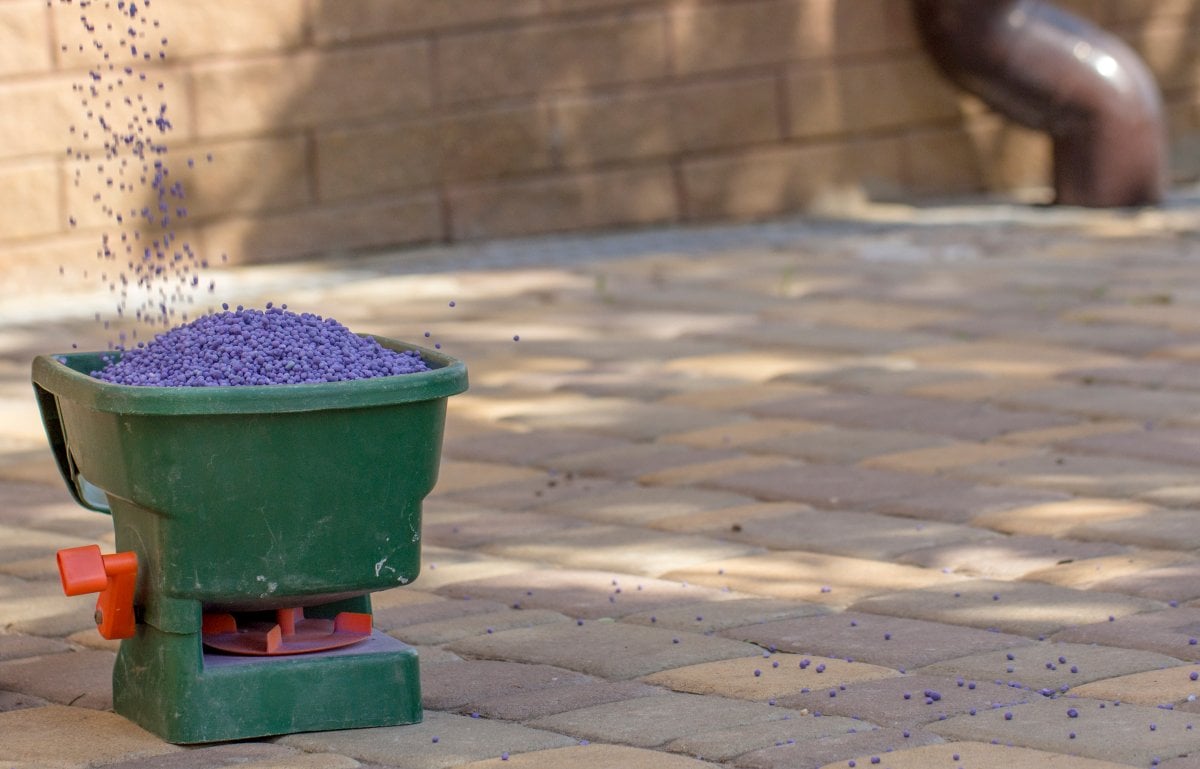
The best time to fertilize your Kentucky bluegrass is in autumn if you want to keep it low-maintenance. However, if you dream of a lawn worthy of a magazine cover, you’ll need to apply fertilizer all year long, except in winter when your grass is taking a nap.
Depending on how dense and green you want your turf to be, expect to apply between 1 and 5 pounds of nitrogen per 1,000 square feet each year. This means you need an annual fertilizer program that involves between one and five applications. In this article, you’ll learn to identify your goals and how and when to fertilize your Kentucky bluegrass lawn.
Kentucky Bluegrass Seasonal Fertilization
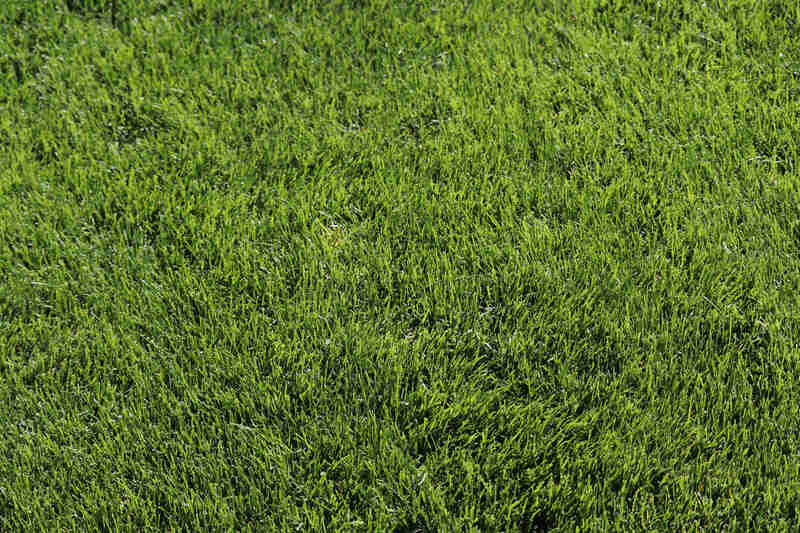
Photo Credit: Joshua Boman / Shutterstock
The right seasonal fertilizer application can turn your Kentucky bluegrass from drab to fab. But first, a tip from the pros: get a soil test. It will tell you exactly what nutrients your grass needs and what season to apply them in.
Then, depending on how lush and green you want your Kentucky bluegrass to be, you have to apply anywhere from 1 to 5 pounds of fertilizer per 1,000 square feet each year.
Before you go on a fertilizing frenzy, set your goals. If you dream of having the greenest, most vibrant lawn on the block, get ready to use the highest amount of fertilizer and apply it more often. It’s a high-maintenance task, but your lawn will look amazing.
On the other hand, if you just want your lawn to be healthy without spending too much time and energy, stick to the lowest amount of nitrogen. This low-maintenance approach will keep your grass in good shape with less effort.
Take a look at the following chart to help you decide your goals:
Maintenance Intensity | Total Annual Amount | Early Spring | Late Spring | Summer | Early Autumn | Late Autumn |
|---|---|---|---|---|---|---|
| Pounds of Nitrogen per 1,000 square feet | ||||||
| Low | 1 – 3 | 0 – 0.5 | 0 – 0.5 | 0 | 0.5 – 1 | 0 – 1 |
| Moderate | 2 – 4 | 0 – 0.75 | 0.5 – 0.75 | 0 | 0.5 – 1 | 1 – 2 |
| High | 3 – 5 | 0 – 0.5 | 0.5 – 1 | 0.5 – 1 | 1 – 2 | 1 – 2 |
Spring Fertilization for Kentucky Bluegrass (March – May)
Low Maintenance Fertilizer Application
If you’re aiming for a low-maintenance bluegrass lawn that’s healthy but doesn’t need to be the greenest on the block, here’s the plan for you. This approach is not suitable for intense traffic or heavy use, and your lawn density might decline a bit. Apply a total of 1 to 3 pounds of nitrogen per 1,000 square feet each year.
In spring, you can skip fertilizing if you want (autumn is, after all, the ideal time to fertilize Kentucky bluegrass). But if you skipped fertilization last autumn, spring is a good time to make up for it.
So, if you do decide to give your lawn a little fertilizer, apply 0.5 pounds of nitrogen per 1,000 square feet in early spring (mid-March through April) and another 0.5 pounds in May. Make sure to space out your fertilizing sessions by six to eight weeks.
Moderate Maintenance
If you’re after a moderately-maintained lawn with a decent green color but can tolerate some seasonal changes, here’s your game plan. This approach suits moderate traffic and use during non-drought periods. You’re aiming to apply 2 to 4 pounds of nitrogen per 1,000 square feet each year.
In early spring, you can either skip fertilizing or go for it. If you choose to fertilize, apply 0.75 pounds of nitrogen per 1,000 square feet between mid-March and April, followed by another application of 0.5 to 0.75 pounds in May.
High Maintenance
For those of you who want the darkest green color and the densest turf that can handle intense traffic and heavy use, here’s your high-maintenance strategy. You’re aiming for 3 to 5 pounds of nitrogen per 1,000 square feet each year.
You can choose to skip fertilizing in early spring, but if you want to get started, apply 0.5 pounds of nitrogen per 1,000 square feet between mid-March and April. Then, give it another boost with 0.5 to 1 pound of nitrogen in May. Don’t forget to space out your fertilizing sessions by six to eight weeks.
Summer Fertilization for Kentucky Bluegrass (June – August)
Low Maintenance
For those of you who prefer to keep lawn care simple and low-maintenance, summer is your time to relax. No need to fertilize your Kentucky bluegrass during these hot months. Kick back and let your lawn enjoy its summer break.
Moderate Maintenance
Moderate maintenance homeowners, you’re in luck too! Summer means no fertilizing for you either. Your lawn can handle a little color change and will survive moderate traffic without the extra nutrients. So, take a break and enjoy the season: your lawn will be just fine.
High Maintenance
Kentucky bluegrass does not need nitrogen in summer. However, for the high-maintenance lawn enthusiasts who want that deep green color and dense turf even in the heat, here’s your summer game plan. Apply 0.5 to 1 pound of nitrogen per 1,000 square feet during the summer months.
Note: Applying nitrogen to Kentucky bluegrass (or any cool-season grass for that matter) in the summer increases the chance of pests and diseases. If you decide to follow this high-maintenance plan, you’ll need to combine it with pest and disease interventions.
Autumn Fertilization for Kentucky Bluegrass (September – November)
Low Maintenance
As the crisp autumn air rolls in, it’s time to give your low-maintenance lawn a little boost. Apply 0.5 to 1 pound of nitrogen per 1,000 square feet in September. Then, treat your lawn to another application of 1 pound of nitrogen per 1,000 square feet in either October or November.
Remember to space out these fertilizing sessions by six to eight weeks. Your lawn will be ready to weather the winter.
Moderate maintenance
For a moderately-maintained lawn that can handle a bit more traffic and still look good, autumn is your season to shine. Start with 0.5 to 1 pound of nitrogen per 1,000 square feet in September. Follow it up with another dose of 1 to 2 pounds of nitrogen per 1,000 square feet in October or November.
High maintenance
High-maintenance lawn lovers, autumn is your time to go all out. Apply 1 to 2 pounds of nitrogen per 1,000 square feet in September. Then, keep the momentum going with another 1 to 2 pounds of nitrogen per 1,000 square feet in October or November.
Don’t forget to space out your fertilizing sessions by six to eight weeks. Your lawn will be the epitome of lush, green perfection, ready to handle anything from football games to fall picnics.
When Not to Fertilize Kentucky Bluegrass
Fertilizing your Kentucky bluegrass can work wonders, but there are definitely times when it’s better to hold off. Here’s when you shouldn’t fertilize your lawn:
- Excessive heat: Summer can be tough on grass, especially during a heatwave. Applying fertilizer during excessive heat can stress your lawn even more.
- Weed infestation: If your lawn is overrun with weeds, tackle those pesky invaders first. Fertilizing a weed-infested lawn is like sending an open invitation for more weeds to appear in your lawn. Once you’ve got the weeds under control, then you can think about fertilizing.
- After rain: Post-rainstorm fertilizing is a no-go. If you apply fertilizer right after a heavy rain, the nutrients are likely to wash away before your lawn has a chance to soak them up.
- During dormancy period: Don’t fertilize during winter when your grass is dormant. It’s taking a nap, and no matter how much you fertilize, it’s just not going to absorb nutrients. Save your efforts for when your lawn is awake and ready to grow.
- Without soil test results: Always get a soil test first to understand what nutrients your lawn needs. This way, you’re not wasting fertilizer or harming your grass.
FAQ About Fertilizing Kentucky Bluegrass
What do fertilizer numbers mean?
The small numbers you see on each bag of fertilizer represent nitrogen, phosphorus, and potassium, in that order. These are called macronutrients, and they’re the key nutrients that help plants grow. Check this guide on Fertilizer Numbers: Why They Matter and What They Mean.
Is lime good for Kentucky bluegrass?
Lime is beneficial for your lawn if you need to correct its pH balance and bring soil acidity back to optimal levels. Cool-season grasses like Kentucky bluegrass thrive with pH levels between 6 and 6.8.
Is it possible to burn my Kentucky bluegrass with fertilizers?
Fertilizers contain salts. When you apply an excess of fertilizer it can cause these salts to surround the root system, and hinder proper water absorption. When this happens, your grass loses health, vitality, and color, resulting in brown patches. This condition is known as fertilizer burn.
Find Help to Maintain Your Lawn
Applying fertilizer to your Kentucky bluegrass will yield fantastic results, making it green and vibrant. However, be prepared for more work as your grass grows thicker and faster, meaning you’ll be spending more time mowing.
If the upkeep becomes overwhelming, contact a lawn care professional who can help you maintain a beautiful lawn.
Main Photo Credit: maykal / Adobe Stock
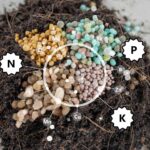

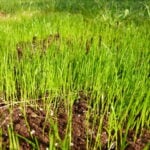
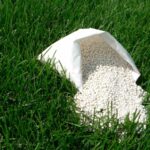
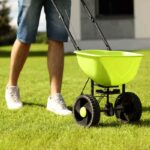
![7 Best Fertilizers for Grass in 2024 [Reviews]](https://www.lawnstarter.com/blog/wp-content/uploads/2023/12/Best-Fertilizers-for-Grass-150x150.jpg)